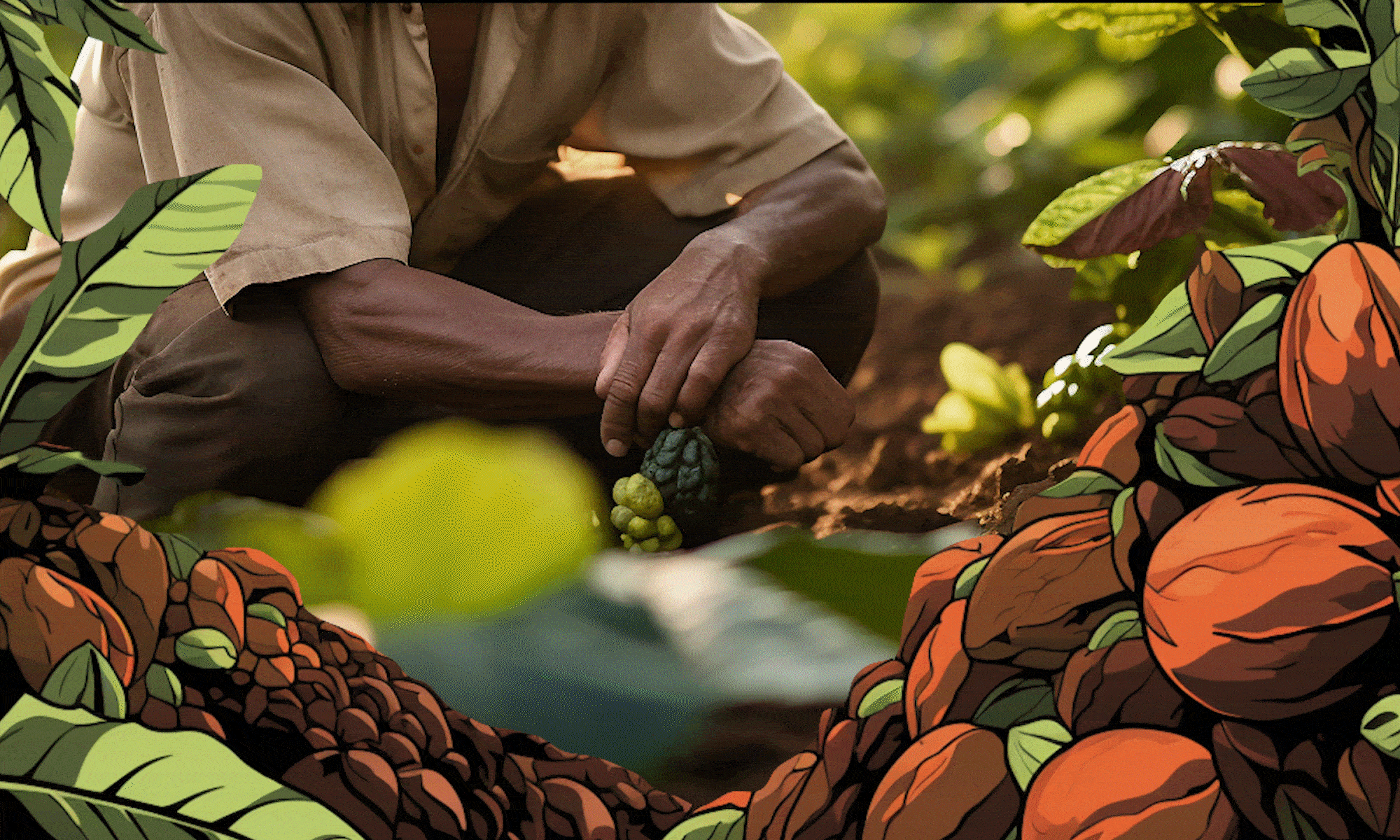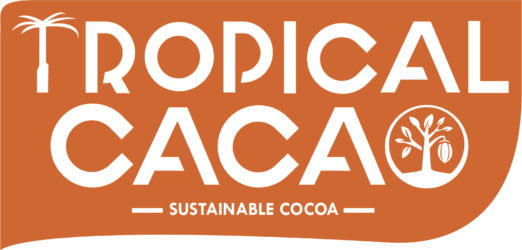🌴🍫
*Discover the hidden magic behind the world’s most exquisite chocolate and why its tropical origins make all the difference*
## Introduction: The Tropical Difference 🌞
When you bite into a piece of truly exceptional chocolate, that moment of pure bliss isn’t just in your imagination. There’s actual science—and centuries of wisdom—behind why chocolate sourced from tropical regions delivers a flavor experience that simply can’t be replicated elsewhere.
As global interest in artisanal, single-origin chocolate continues to grow, discerning chocolate lovers are increasingly asking: **why does tropical cacao taste so much better?** The answer stays in a fascinating combination of geography, biodiversity, traditional farming practices, and the unique cultural heritage of tropical cacao-growing regions.
In this comprehensive guide, we’ll journey deep into the lush rainforests where the world’s finest cacao is grown and uncover the secrets that make tropical chocolate a truly transcendent experience.
## The Perfect Growing Environment: Nature’s Chocolate Laboratory 🌡️
### The Cacao Belt: Where Magic Happens
The cacao tree (*Theobroma cacao*—literally “food of the gods”) thrives within approximately 20 degrees north and south of the equator. This narrow band around Earth’s middle—often called the “Cacao Belt”—provides the precise conditions these sensitive trees need:
– **Consistent Temperatures**: Cacao trees require stable temperatures between 65-90°F (18-32°C) year-round.
– **High Humidity**: 80-100% humidity creates the optimal environment for cacao development.
– **Rainfall Patterns**: Regular rainfall of 1,500-2,000mm annually, ideally distributed throughout the year.
– **Dappled Sunlight**: Cacao evolved as an understory tree, requiring filtered light rather than direct sun.
The tropical environment isn’t just good for cacao—it’s essential. These trees evolved specifically in these conditions over thousands of years, and their genetics are literally programmed for tropical life.
### The Science of Terroir: How Geography Influences Flavor
Just as wine connoisseurs speak of “terroir”—the complete natural environment where a particular wine is produced—cacao experts recognize that tropical growing conditions create distinctive flavor profiles impossible to replicate elsewhere:
1. **Soil Composition**: Volcanic soils in regions like Ecuador impart mineral notes, while the limestone-rich soils of the Dominican Republic contribute to fruitier flavors.
2. **Microclimate Variations**: Even within the tropics, subtle differences in elevation, proximity to water bodies, and seasonal patterns create unique flavor signatures.
3. **Slow Growth Advantage**: The measured pace of growth in tropical shade-grown cacao allows for more complex flavor compound development—similar to how slow-ripened fruits develop deeper flavors.
📊 **Flavor Development Timeline**:
– Day 0-90: Flower pollination and pod formation
– Day 90-140: Development of basic sugars and acids
– Day 140-180: Formation of complex flavor precursors
– Day 180-240: Final ripening and peak flavor potential
## Biodiversity Impact: Nature’s Flavor Enhancement System 🦋
### The Rainforest Symphony
Unlike industrial monoculture farming, traditional tropical cacao grows within diverse ecosystems that contribute significantly to chocolate’s complex flavor profile:
#### The Pollinators
Tiny midges (Forcipomyia spp.) are the primary pollinators of cacao flowers. These specialized insects require the humid, sheltered environment of diverse rainforests to survive. Without them, cacao pollination rates drop dramatically, affecting both yield and quality.
#### Companion Plants
Traditional cacao farms incorporate:
– **Shade Trees**: Tall tropical hardwoods that filter sunlight
– **Intermediate Canopy**: Fruit trees like banana, plantain and mango
– **Ground Cover**: Smaller plants that regulate soil moisture and temperature
These companion plants don’t just provide physical benefits—they create a complex web of biochemical interactions that influence cacao flavor development.
### Microbiome Magic
Perhaps the most fascinating aspect of tropical cacao’s superior taste comes from the microscopic level:
The indigenous microorganisms present in tropical forest ecosystems—bacteria, yeasts, and fungi—play crucial roles in fermentation that we’re only beginning to fully understand.
Research has shown that each tropical growing region has its own unique microbial “signature” that contributes to the distinctive flavor profiles of cacao from different origins:
– **West African Cacao**: Often features earthy, robust flavors
– **Central American Cacao**: Typically develops fruity, bright notes
– **South American Cacao**: Frequently displays floral, complex profiles
These regional differences stem partly from the native microorganisms that naturally occur on cacao beans and participate in the crucial fermentation process.
## Traditional Harvesting Methods: The Human Touch 👨🌾
### Wisdom Passed Through Generations
In tropical cacao-growing communities, harvesting knowledge has been refined over generations, resulting in practices that maximize flavor potential:
#### Perfect Timing
Expert farmers recognize the subtle signs of perfect ripeness that machines cannot detect:
– **Visual Cues**: The precise color change unique to each cacao variety
– **Sound Test**: The distinctive hollow sound when a perfectly ripe pod is tapped
– **Stem Resistance**: The slight give when a pod is gently twisted
#### Hand Selection
Unlike mechanized harvesting, traditional methods involve careful selection decisions for each individual pod:
1. **Selective Cutting**: Only perfectly ripe pods are harvested
2. **Careful Handling**: Pods are removed without damaging the cushion where future flowers will grow
3. **Immediate Assessment**: Experienced farmers crack open sample pods to check bean quality
### The Harvest Calendar
Traditional tropical cacao farmers work with natural rhythms rather than against them:
🗓️ **Seasonal Wisdom**:
– Following moon phases for optimal harvesting times
– Recognizing the impact of seasonal rains on flavor development
– Adjusting harvest timing based on subtle environmental cues
Listen to the forest. When certain birds return or particular flowers bloom, that’s to know the cacao is reaching its peak.
## Fermentation Secrets: The Alchemical Transformation 🧪
### The Flavor Foundation
While many chocolate consumers focus on roasting and conching, it’s actually fermentation that establishes up to 70% of chocolate’s flavor potential:
#### Traditional Fermentation Methods
The world’s finest cacao undergoes a fermentation process that has been perfected over centuries:
1. **Banana Leaf Wrapping**: In many tropical regions, fresh cacao beans are wrapped in banana leaves, which introduce beneficial microorganisms
2. **Wooden Box Fermentation**: Traditional wooden boxes made from local trees impart subtle flavor notes and harbor beneficial microbial communities
3. **Gradual Temperature Progression**: The natural heat of tropical environments allows for an ideal fermentation curve
### Microbial Intelligence
The complex succession of microorganisms during fermentation follows a precise pattern:
– **Hours 0-48**: Yeast dominance, breaking down sugars and producing alcohol
– **Hours 48-96**: Lactic acid bacteria proliferation, developing acids and precursor compounds
– **Hours 96-144**: Acetic acid bacteria activity, creating compounds that will later become complex flavors
> **”The tropical climate provides the perfect temperature curve for fermentation—starting around 25°C and naturally rising to the ideal 45-50°C as microbial activity increases. This temperature progression is crucial for developing the precursor compounds that will later become chocolate’s most prized flavor notes.”** — Dr. Sophia Lin, Fermentation Specialist
### The Drying Dance
After fermentation, the careful drying process in tropical regions takes advantage of natural conditions:
– **Sun Drying**: Gentle tropical sun drying allows for gradual moisture reduction while enzymatic reactions continue
– **Afternoon Shade**: Strategic covering during the most intense heat preserves volatile compounds
– **Night Covering**: Protection from dew maintains the perfect drying curve
The result is beans with optimally developed flavor precursors, ready to express their full potential during roasting.
## Direct Trade Benefits: Relationships That Enhance Quality 🤝
### The Human Element of Flavor
Perhaps the most overlooked factor in tropical cacao’s superior taste is the human relationship element that comes with ethical sourcing:
#### Motivation for Excellence
When farmers receive fair compensation and build direct relationships with chocolate makers:
– They can afford to focus on quality rather than quantity
– They’re motivated to implement best practices at every stage
– They receive direct feedback on flavor outcomes, creating a continuous improvement loop
#### Traditional Knowledge Preservation
Direct trade relationships help preserve traditional knowledge that might otherwise be lost:
– Ancient fermentation techniques passed through generations
– Local understanding of microclimates and optimal harvesting times
– Cultural practices that enhance flavor development
### Community Impact
Sustainable tropical cacao communities maintain:
– **Biodiversity Conservation**: Protecting the very ecosystems that make their cacao special
– **Cultural Preservation**: Keeping alive traditions that enhance chocolate quality
– **Economic Stability**: Allowing focus on quality rather than mere survival
> **”When farmers are treated as partners rather than commodities, they share their deepest knowledge—secrets about their land, their trees, and their methods that have been in their families for generations. That knowledge is priceless for chocolate quality.”** — Gabriel Torres, Direct Trade Chocolate Maker
## Flavor Profiles: The Tropical Advantage 🍎🍑🍇
### Regional Flavor Signatures
Different tropical growing regions produce distinctly different flavor profiles.
### Flavor Wheel: Tropical Complexity
The flavor complexity of tropical cacao far exceeds that of commodity chocolate:
🔄 **Key Flavor Dimensions**:
– **Fruit Notes**: Berries, citrus, tropical fruits, stone fruits
– **Floral Notes**: Jasmine, orange blossom, lavender
– **Spice Notes**: Cinnamon, nutmeg, cardamom
– **Earthy Notes**: Forest floor, mushroom, moss
– **Nut Notes**: Almond, walnut, hazelnut
– **Caramel Notes**: Butterscotch, toffee, dulce de leche
– **Herbal Notes**: Mint, basil, thyme
## The Roasting Revelation: Unlocking Tropical Potential 🔥
### Honoring Origin Through Roasting
Expert chocolate makers understand that tropical cacao requires a different approach to roasting:
#### Origin-Specific Roasting
– **Gentle Temperature Curves**: Lower, slower roasting preserves the delicate flavor notes unique to tropical origins
– **Flavor Monitoring**: Continuous sampling throughout the roast to capture peak flavor expression
– **Customized Profiles**: Developing specific roast profiles for each origin and harvest
Tropical cacao beans contain such complex flavor precursors that our job as chocolate makers is really about revealing what’s already there, not imposing flavor through heavy roasting. It’s about listening to what the beans want to become.”
### The Chemical Transformation
During roasting, hundreds of chemical reactions occur, including:
– **Maillard Reactions**: Creating brown colors and rich flavors
– **Strecker Degradation**: Producing specific aromatic compounds
– **Caramelization**: Developing sweetness and complexity
Tropical cacao’s rich precursor compounds provide the perfect foundation for these reactions, resulting in significantly more complex flavor development.
## Beyond Taste: The Holistic Tropical Experience 🧠
### Health and Wellness Connection
Tropical cacao’s benefits extend beyond flavor:
#### Antioxidant Content
Studies have shown that cacao grown in biodiverse tropical environments typically contains:
– Higher flavanol content
– More diverse polyphenol profiles
– Greater antioxidant activity
#### Ethical Wellness
There’s a growing recognition that truly enjoying chocolate includes knowing it was produced:
– In harmony with nature
– With respect for traditional knowledge
– Through fair economic relationships
### The Mindful Chocolate Experience
When enjoying tropical origin chocolate:
1. **Observe the Appearance**: Note the glossy sheen and distinctive color
2. **Listen to the Snap**: Quality tropical chocolate has a clean, crisp break
3. **Smell Deeply**: Inhale the complex aromatics before tasting
4. **Taste Slowly**: Allow the chocolate to melt on your tongue, noting how flavors evolve
5. **Feel the Texture**: Notice the smooth mouthfeel and clean finish
## Conclusion: The Tropical Promise
The superior taste of tropical cacao isn’t just one factor—it’s the remarkable convergence of perfect growing conditions, incredible biodiversity, centuries of traditional knowledge, and ethical relationships that prioritize quality.
When you choose chocolate made from authentic tropical cacao, you’re not just selecting a better-tasting product. You’re connecting with an ancient food tradition, supporting sustainable agriculture practices, and encouraging the preservation of both cultural knowledge and biological diversity.
The tropical advantage in chocolate isn’t a marketing gimmick—it’s a scientifically verifiable difference that you can taste. As consumers become more educated about chocolate quality, the demand for true tropical origin cacao continues to grow, encouraging more farmers to maintain traditional practices that produce extraordinary flavor.
### Experience the Difference
Ready to taste the tropical difference for yourself? Here’s how to begin your journey:
– **Look for Origin Information**: Seek chocolates that specifically identify their tropical source
– **Check Processing Details**: Find makers who respect traditional methods
– **Start a Tasting Journal**: Compare different tropical origins to discover your preferences
– **Connect with Producers**: Many tropical chocolate makers offer virtual tours or tastings
> **”Chocolate isn’t just food—it’s a story. When that story begins in a vibrant tropical ecosystem, tended by knowledgeable farmers using traditional methods, the ending is always delicious.”
Fermented vs. Unfermented Raw Cacao
Discover the nuances between cacao varieties in our comprehensive guide. Looking for recipes? Jump to our Raw Cacao Recipe Collection. New to cacao? Check out our Beginner’s Guide to Cacao.
Understanding The Art of Cacao🌿
A Complete Guide by Tropical Cacao
Whether you’re making truffles or crafting your bars, understanding the difference between fermented and unfermented cacao is essential. Let’s explore these unique varieties and help you choose the perfect option for your needs.
Understanding Raw Cacao: Nature’s Gift 🌱
Raw cacao, harvested from the majestic Theobroma cacao tree, represents chocolate in its purest form. Want to learn more about harvesting? Visit our Cacao Farm Gallery page or explore our Sustainable Farming Practices.
Unfermented Raw Cacao: Pure and Potent ✨
Love our unfermented cacao?
Distinctive Flavor Profile
- A bold, earthy taste with natural bitterness
- Pure cacao experience
Nutritional Powerhouse 💪
- Maximum antioxidant preservation
- Abundant raw enzymes and bioactive compounds
Fermented Raw Cacao: The Gourmet Choice 🎨
Ready to try fermented cacao?
Need Help Choosing? 🤔
Visit our Mission and Vision Guide or contact our experts for personalized recommendations.
The Tropical Cacao Quality Promise 🌴
Our commitment to excellence shows in every product.
New to Tropical Cacao? Start with our Seedlings or read about our Industry for exclusive tips. 🌿
Contact us | Gallery | About Tropical Cacao
Related Articles:
Raw Cacao Recipes
Raw Cacao Recipe Collection – Tropical Cacao
Raw cacao, the purest form of chocolate, is a versatile superfood packed with antioxidants, minerals, and rich flavors. Whether you’re looking to create indulgent desserts, nourishing snacks, or a healthy twist to your favorite recipes, raw cacao is the perfect ingredient to elevate your culinary creations.
At Tropical Cacao, we’re passionate about showcasing the endless possibilities of raw cacao. That’s why we’ve curated this collection of easy and delicious recipes to inspire your next cacao adventure!
1. Raw Cacao Smoothie Bowl
Start your day with a burst of energy!
Ingredients:
- 2 frozen bananas
- 2 tablespoons raw cacao powder
- 1 cup almond milk (or any plant-based milk)
- 1 tablespoon peanut butter
- Toppings: granola, fresh fruit, shredded coconut, cacao nibs
Instructions:
- Blend frozen bananas, raw cacao powder, almond milk, and peanut butter until smooth.
- Pour into a bowl and top with granola, fruit, and cacao nibs.
- Enjoy a nutrient-packed breakfast that’s as delicious as it is beautiful!
2. Raw Cacao Energy Bites
Perfect for an on-the-go snack or pre-workout boost.
Ingredients:
- 1 cup dates (pitted)
- 1/2 cup raw almonds or walnuts
- 2 tablespoons raw cacao powder
- 1 tablespoon chia seeds
- A pinch of sea salt
Instructions:
- Blend dates and nuts in a food processor until sticky.
- Add raw cacao powder, chia seeds, and salt. Blend again until combined.
- Roll the mixture into small balls and refrigerate for 30 minutes.
- Store in an airtight container for a quick, healthy snack.
3. Raw Cacao Avocado Mousse
A creamy, guilt-free dessert!
Ingredients:
- 2 ripe avocados
- 1/4 cup raw cacao powder
- 1/4 cup maple syrup (or honey)
- 1 teaspoon vanilla extract
- A pinch of sea salt
Instructions:
- Scoop avocado flesh into a blender or food processor.
- Add raw cacao powder, maple syrup, vanilla extract, and salt.
- Blend until smooth and creamy.
- Chill for 20 minutes before serving. Garnish with fresh berries or cacao nibs.
4. Raw Cacao Granola Bars
A homemade treat packed with flavor and nutrients.
Ingredients:
- 2 cups rolled oats
- 1/2 cup raw cacao nibs
- 1/2 cup sunflower seeds
- 1/4 cup raw honey
- 1/4 cup almond butter
- 1 teaspoon vanilla extract
Instructions:
- Mix oats, cacao nibs, and sunflower seeds in a bowl.
- In a small saucepan, heat honey and almond butter until smooth. Stir in vanilla.
- Pour the wet mixture into the dry ingredients and mix well.
- Press into a parchment-lined baking dish and refrigerate for 1 hour.
- Slice into bars and store in the fridge.
5. Raw Cacao Hot Chocolate
A warm, comforting drink with a healthy twist.
Ingredients:
- 2 tablespoons raw cacao powder
- 1 cup almond milk
- 1 teaspoon coconut sugar or honey
- 1/2 teaspoon cinnamon
- Optional: a pinch of cayenne pepper for a spicy kick
Instructions:
- Heat almond milk in a saucepan until warm.
- Whisk in raw cacao powder, coconut sugar, and cinnamon until smooth.
- Pour into a mug and enjoy the ultimate cozy drink.
Elevate Your Recipes with Tropical Cacao
Raw cacao offers endless possibilities for creativity in the kitchen. Whether you’re blending a smoothie, rolling energy bites, or savoring a rich mousse, each recipe showcases the unique flavor and health benefits of raw cacao.
At Tropical Cacao, we’re proud to provide high-quality, sustainably sourced raw cacao from our farms in Liberia. Explore our range of fermented and unfermented cacao to find the perfect match for your recipes.
Shop Now at TropicalCacao.com and Unleash Your Inner Chef!
Sustainable Cocoa Cultivation
Modern Practices for a Thriving Future 🌱
In today’s evolving agricultural landscape, sustainable cocoa cultivation stands as a beacon of innovation and environmental stewardship. This comprehensive guide explores cutting-edge practices that are revolutionizing how we grow and maintain cacao trees while preserving our planet’s precious resources.
The Foundation of Sustainable Cocoa Farming 🌳
Agroforestry Systems
Modern sustainable cocoa cultivation thrives on the principle of working with nature, not against it. Successful agroforestry systems include:
- Diverse shade trees providing natural canopy
- Companion plants supporting soil health
- Indigenous species maintaining local biodiversity
- Strategic spacing optimizing sunlight and resources
Soil Management Excellence 🌿
The heart of sustainable cocoa farming lies in maintaining healthy soil:
- Natural composting systems
- Cover crop rotation
- Organic matter management
- Biological pest control methods
Innovative Sustainable Practices
Water Conservation Techniques 💧
Modern sustainable farms employ sophisticated water management:
- Drip irrigation systems
- Rainwater harvesting
- Soil moisture monitoring
- Drought-resistant varietals
Natural Pest Management 🐞
Effective organic pest control strategies include:
- Beneficial insect cultivation
- Natural predator encouragement
- Botanical pesticides
- Regular monitoring systems
Economic Sustainability
Value-Added Processing 📈
Creating sustainable value chains through:
- On-site fermentation facilities
- Quality control systems
- Direct trade relationships
- Premium market access
Certification Programs 🏆
Key sustainability certifications including:
- Organic certification
- Rainforest Alliance
- Fairtrade
- UTZ standards
Technology Integration
Smart Farming Solutions 📱
Modern sustainable farms leverage technology:
- IoT soil sensors
- Weather monitoring systems
- Harvest tracking apps
- Blockchain traceability
Community Impact
Social Sustainability 👥
Building stronger farming communities through:
- Education programs
- Women’s empowerment initiatives
- Youth engagement
- Fair labor practices
Environmental Benefits
Climate Change Mitigation 🌍
Sustainable practices contributing to:
- Carbon sequestration
- Biodiversity preservation
- Watershed protection
- Ecosystem restoration
Implementation Guide
Getting Started
Step-by-step approach to sustainable conversion:
- Soil assessment and improvement
- Biodiversity integration
- Water management systems
- Organic certification preparation
Measuring Success
Key performance indicators:
- Yield metrics
- Soil health markers
- Biodiversity indices
- Economic sustainability measures
Future Outlook
Innovation Pipeline 🔬
Emerging trends in sustainable cultivation:
- Genetic preservation
- Climate-resilient varieties
- Precision agriculture
- Biocontrol advances
Conclusion
Sustainable cocoa cultivation represents not just an environmental choice but a strategic business decision. By implementing these practices, farmers can ensure long-term viability while contributing to global sustainability goals.
[Ready to transform your cocoa farm? Explore our sustainable farming resources and expert consultation services.]
Keywords: sustainable cocoa farming, organic cacao cultivation, agroforestry systems, environmental sustainability, natural pest management, water conservation, smart farming, biodiversity, climate-resilient agriculture
Unfermented Cacao: Raw Chocolate in Its Purest Form 🌱🍫
Unfermented cacao, often referred to as “raw cacao,” is a rising star in the world of superfoods. Skipping the fermentation process entirely, this cacao retains its natural, earthy qualities while offering unique nutritional benefits. Let’s delve into what makes unfermented cacao special and how you can use it in your daily life.
What Is Unfermented Cacao?
Unlike traditional cacao, which undergoes fermentation to develop its flavor and texture, unfermented cacao skips this step. The result is a raw, minimally processed product that preserves the cacao bean’s natural state.
Benefits of Unfermented Cacao 🌟
- Maximum Nutrient Retention:
Without fermentation, heat-sensitive nutrients like vitamin C and natural enzymes are preserved, making unfermented cacao a potent source of raw nutrition. - High Antioxidant Content:
Unfermented cacao is packed with polyphenols, particularly flavonoids, which promote heart health, support brain function, and combat oxidative stress. - Natural Energy Boost:
Thanks to its unprocessed nature, unfermented cacao contains higher levels of theobromine, a natural stimulant that provides steady energy without the jitters of caffeine. - Earthy, Raw Flavor:
While more bitter than fermented cacao, unfermented cacao offers an intense, earthy taste ideal for those who appreciate the raw essence of chocolate.
How to Use Unfermented Cacao 🍴
- Smoothies: Blend it with bananas, dates, and almond milk for a raw chocolate smoothie.
- Raw Desserts: Use it in energy balls, raw brownies, or homemade chocolate bars.
- Toppings: Sprinkle over oatmeal, yogurt, or smoothie bowls for added crunch and nutrients.
- Drinks: Mix with hot water and a natural sweetener to make a raw cacao drink.
Why Choose Unfermented Cacao? 🤔
Unfermented cacao appeals to raw food enthusiasts and those seeking minimally processed, nutrient-dense options. Its bold flavor and health benefits make it a unique ingredient for creative recipes and wellness-focused lifestyles.
At Tropical Cacao, we offer premium unfermented cacao, ethically sourced to bring the purest chocolate experience straight to you. Explore the raw side of cacao with our carefully curated products today!
Ready for the next blog post? 🌟
Is Fermented Cacao Powder Better? A Deep Dive Into Its Benefits 🍫🌿
Fermented cacao powder has gained attention among chocolate lovers and health-conscious individuals for its robust flavor and potential health benefits. But how does it stack up compared to its unfermented counterpart? Let’s explore the key advantages of choosing fermented cacao powder.
What Makes Fermented Cacao Powder Unique?
Fermented cacao powder is made from beans that undergo a natural fermentation process after harvesting. This step doesn’t just shape the flavor—it also impacts the nutritional profile of the cacao.
Benefits of Fermented Cacao Powder 💪
- Enhanced Flavor Profile:
The fermentation process reduces the bean’s bitterness and develops deeper, more complex flavors that are ideal for chocolate-making and culinary use. - Improved Antioxidant Absorption:
Fermented cacao is rich in flavonoids, powerful antioxidants that support heart health and fight inflammation. The process can also enhance the bioavailability of these compounds, making them easier for your body to absorb. - Promotes Gut Health:
The fermentation stage introduces beneficial microbes that may aid digestion and improve gut health when cacao is consumed. - Better Digestibility:
Fermentation helps break down certain compounds in cacao that might cause digestive discomfort, resulting in a smoother experience for sensitive stomachs.
How to Use Fermented Cacao Powder 🍴
- Add it to smoothies for a nutrient-packed chocolate boost.
- Incorporate it into baked goods like brownies or cakes for a rich, chocolatey flavor.
- Mix it with hot water and a sweetener of choice for a comforting, antioxidant-rich drink.
Is Fermented Cacao Worth It? 🤔
If you prioritize taste and nutritional benefits, fermented cacao powder is an excellent choice. Its enhanced flavor and higher antioxidant content make it ideal for both culinary applications and health-focused diets.
At Tropical Cacao, we provide sustainably sourced fermented cacao powder crafted with care to ensure the best quality. Discover how our premium cacao can elevate your recipes and wellness routine.
Cacao Nibs: Fermented vs. Unfermented – Discover the Differences 🌱🍫
Cacao nibs, the crunchy pieces of crushed cacao beans, are celebrated for their nutritional benefits and distinct flavors. Whether fermented or unfermented, each type brings unique qualities to the table. Let’s explore what sets them apart to help you make the right choice for your needs.
Fermented Cacao Nibs: Where Flavor Meets Functionality ✨
Fermentation is a natural process that develops the flavor and nutritional profile of cacao nibs. Here’s why fermented nibs are a favorite among chocolatiers and health enthusiasts:
- Rich and Balanced Flavor: Fermentation transforms raw bitterness into nuanced notes of fruit, nuts, and chocolate.
- Improved Digestibility: Enzymatic activity during fermentation enhances nutrient absorption, particularly for antioxidants and essential minerals like magnesium.
- Boosted Antioxidant Power: Fermented nibs often have a higher concentration of flavonoids, which support heart health and combat inflammation.
Unfermented Cacao Nibs: Raw and Untamed 🌿
For those who prefer a raw and earthy experience, unfermented nibs deliver:
- Bold, Bitter Taste: These nibs retain their natural bitterness, making them a robust choice for raw recipes.
- Preserved Natural Enzymes: Without fermentation, more of the bean’s natural enzymes remain intact, appealing to raw food enthusiasts.
- Slightly Higher Nutrient Retention: Unfermented nibs may retain certain heat-sensitive nutrients like vitamin C.
How to Enjoy Cacao Nibs 🍴
- Fermented Nibs: Ideal for smoothies, baking, or as a chocolatey snack with a hint of sweetness.
- Unfermented Nibs: Great for raw dishes, trail mixes, or as a topping for yogurt or salads, offering a bold and natural flavor.
Which Option Suits You? 🤔
Your choice depends on personal taste and health priorities:
- If you love rich, smooth flavors with a hint of sweetness, go for fermented nibs.
- For a raw, unprocessed experience with a natural bitterness, choose unfermented nibs.
At Tropical Cacao, we proudly offer premium cacao nibs tailored to your preferences, sustainably sourced to elevate your recipes and snacks. Explore our collection today and taste the difference!
Let me know when you’re ready for the next blog post! 🎉
COCOA PLANT CARE
So you are probably asking yourself how we maintain our cacao trees to make sure the end product is quality and unbeaten in the market. That is our topic of discussion today. Cacao trees survive in hot and humid climates for decades. If they are not well taken care of, Cacao trees can be affected by pests, diseases, and other insufficiencies that could lead to low yield and low-quality produce.
LIGHT
The cacao trees need at least three hours of direct sunlight before being subjected to partial shade. Too much sunlight can burn the leaves of the trees and even attract pests and diseases. We practice agroforestry at the early stages of growth to ensure our trees get shade when necessary.
SOIL
Cacao trees do well in soils rich in organic matter. This is the reason we do not use toxic chemical fertilizers in our farms. The soils must have the ability to balance acidity and alkalinity. They also must have good drainage, they do well in loamy soils.
WATER
Cocoa trees do well in soils with constant moisture. However, do not overwater the trees as the soil becomes soggy and this could lead to the rotting of the trees.
TEMPERATURE AND HUMIDITY
Cocoa trees have a good heat tolerance as long as their leaves are not damaged and there is constant moisture in the soil. Temperatures between 65 degrees and 85degrees are ideal for the trees.
High humidity is also important for trees to grow well. However, constantly inspect your trees as high humidity could lead to pests and diseases.
FERTILIZER
Using compost and manure to nourish the plants is important. The Theobroma trees feed a lot of nutrients from the soil and therefore the supply should be consistent. Using chemicals and toxins could lead to dying of the tree and low yields.
PRUNING
It is important to prune the cocoa trees at least twice a year. This can be done after harvesting the fruits. Pruning helps to eradicate diseased, dead, or damaged leaves or branches and as a result, protect the whole plant. Selective pruning also helps a sufficient supply of sunlight to all parts of the plant and good air circulation.
HOW TO CHOOSE THE HEALTHIEST DARK CHOCOLATE
Not all dark chocolates are healthy for you; therefore, looking for your perfect match is equally important. Dark chocolate is a rich source of antioxidants and provides your body with numerous health benefits. Antioxidants remove free radicals in the body that cause aging and heart diseases. Dark chocolate is also high in fiber.
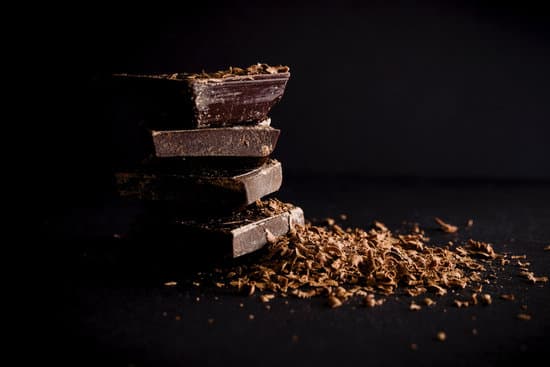
The purest form of dark chocolate is the nib. this is the unsweetened dark chocolate used for baking purposes. When the nib is melted it forms cacao liquor. A good healthy dark chocolate should have at least 60%-70% of pure cacao.
To make sure you are getting the best healthy dark chocolate, always look at the ingredients and their concentration/amounts. The purest dark chocolate is bitter and has less sugar and milk. most times the ingredients in healthy dark chocolates rotate from cocoa powder, cocoa butter, chocolate liquor, sugar, and milk. Most chocolates sold at grocery stores have too much milk, sugar, flavors, etc. These might not provide all the organic benefits you are looking for. Look out for organic sugar in the chocolate too. Lecithin is not as good for your health.
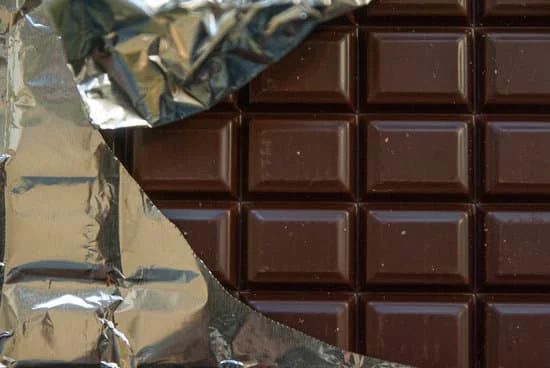
Chocolates that have “Dutch process” or “European style” should also be avoided as they have alkali added in the ingredients. That means that the cocoa used in these chocolates has been over-processed and this destroys the healthy antioxidants.
To enjoy the full benefits of dark chocolate, always be on the lookout for these and more specks while shopping. Remember that healthy chocolate is made from organic cacao. I recommend buying organic cacao beans and making your chocolate at home if you are in the position to. At Tropical Cacao, we ensure consumers get the best end products i.e., quality and healthy dark chocolate. Why don’t you Contact Us today?
CACAO POWDER VS COCOA POWDER
Most people will never differentiate cacao from cocoa. Well, that is okay but as chocolate lovers, I have made it intentional to feed us with knowledge about this great product. Although there is not much about the topic on the discussion today, you will get one or two points to carry home.
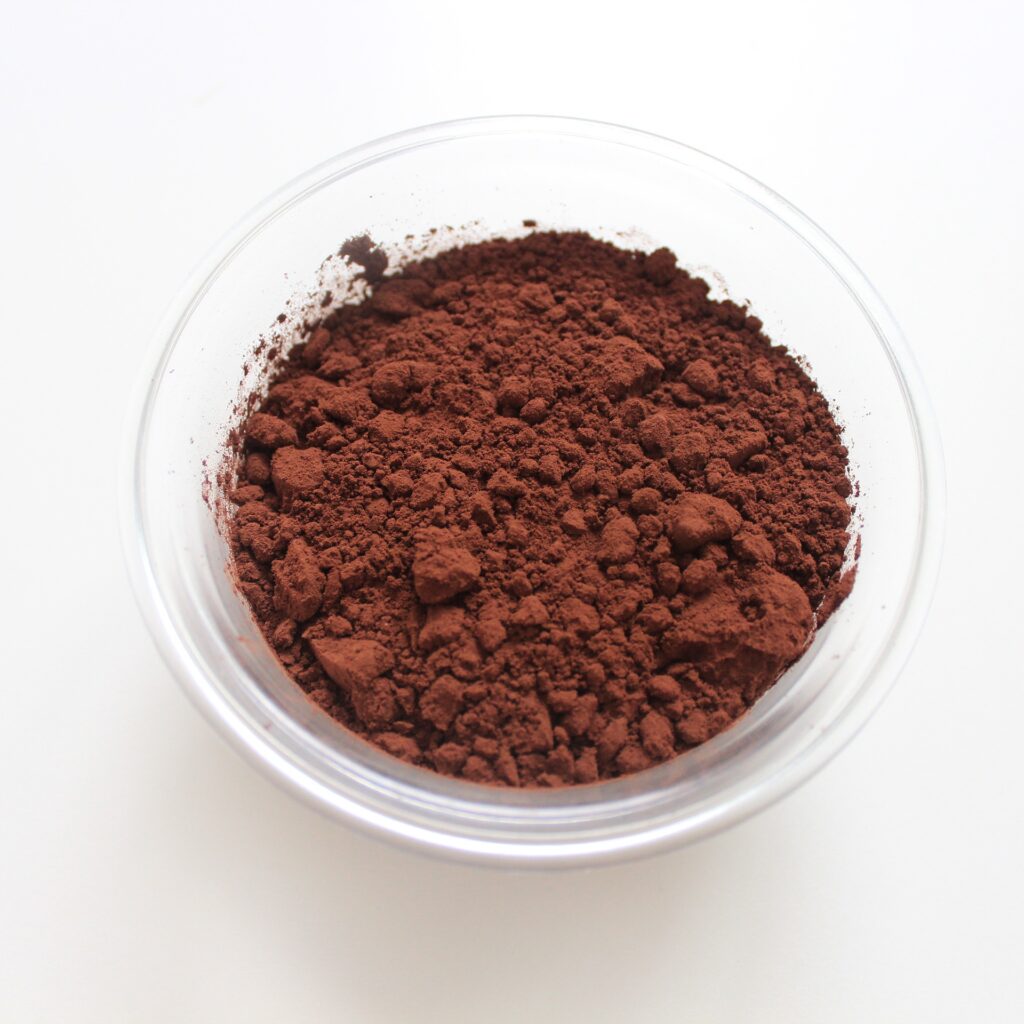
Although cacao and cocoa powders are by-products of the seeds of the cacao tree (Theobroma), there is a difference in the way they are processed. In the previous articles, I have told you how cocoa powder is formed. The cacao beans are fermented, dried, and roasted under high temperatures. After that, the hulls are removed, and then they are pressed to form the chocolate liquor. they are further pressed to extract cocoa butter and the powder that is left is what is called cocoa powder. Cacao powder undergoes an almost similar procedure but skips the roasting part. The cacao beans are cold pressed to separate the cacao butter from cacao solids. These solids are then ground to form cacao powder. The major difference is therefore on the processing procedures. Cacao powder is pressed under low temperatures while cocoa powder is pressed under high temperatures
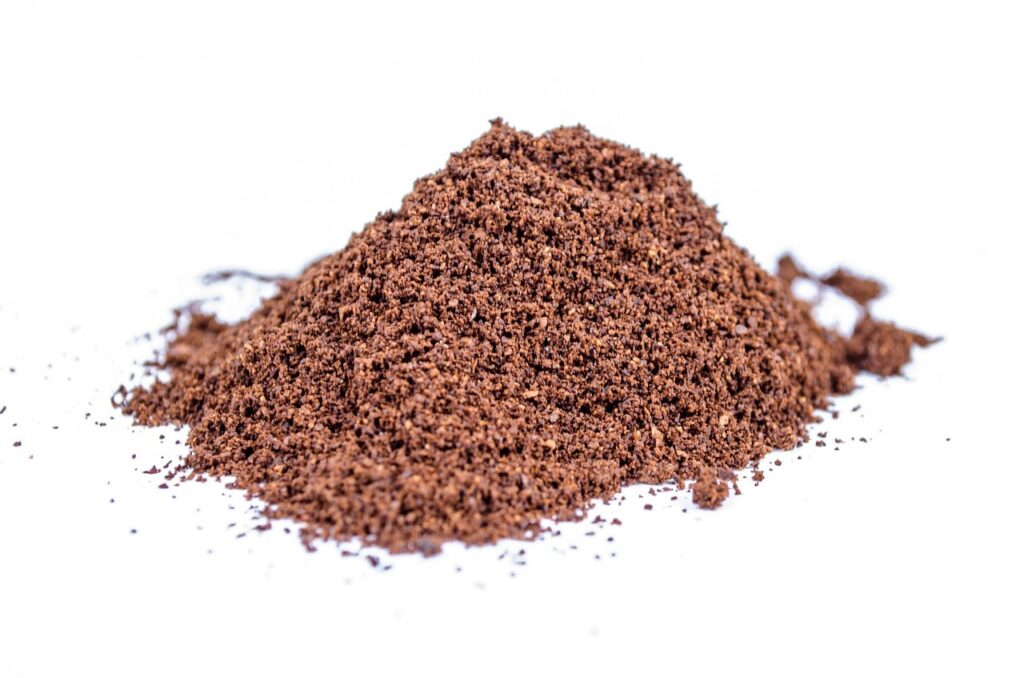
The cacao powder is ground and sifted retaining most of the nutrients, enzymes, and minerals. Cocoa powder on the other hand loses most of its nutrients, minerals, and enzymes when pressed under high temperatures. Cacao powder is therefore considered “raw” and better for consumption.
The other difference between these two is the taste. Cacao powder is more bitter than cocoa powder. This again is because of the processing procedures. Cacao powder is however preferred as it is more natural and offers more nutritional benefits.
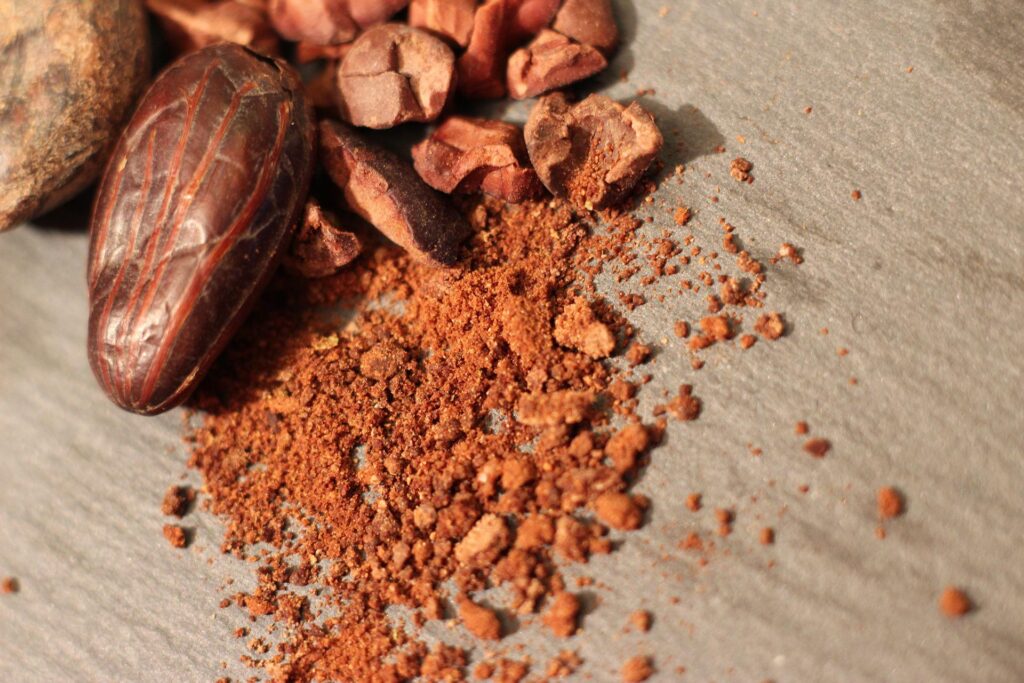
The chocolate flavor that cacao powder has is deeper than in cocoa powder and this is why most bakers prefer cacao powder. It is rich in flavor and deeper in color.
The cocoa powder loses its power as a superfood when it undergoes processing under high temperatures. Some processing companies also add sweeteners to cocoa powder. Cacao powder is left raw and this allows it to retain all its nutrients and therefore considered a “SUPERFOOD” That doesn’t mean that cocoa powder doesn’t have health benefits, it has. If you visit the grocery store and miss on cacao powder, take cocoa powder. It will work perfectly as a substitute.
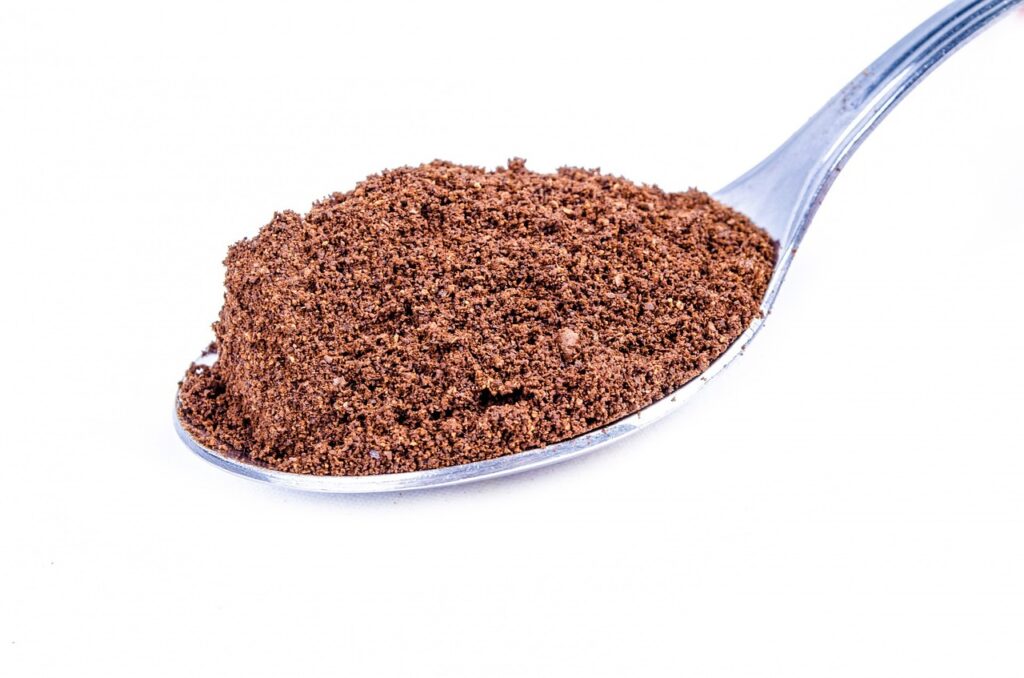
However, this is why I prefer cacao powder over cocoa powder;
- Cacao powder is full of antioxidants. Cacao has been proven to contain more antioxidants even more than blueberries. Antioxidants prevent diseases and help all the vital organs in the body function better.
- Cacao powder is a mood enhancer. You remember those stories about the Aztecs and how they used cacao to make ceremonial drinks right? Raw cacao powder has compounds that help to relieve the body from anxiety and lift your mood.
If you like leveraging raw organic products as I do, then it’s definite that you will go for cacao powder. At tropical cacao, we ensure the consumers get the best quality, most organic, and benefits-packed cacao. Contact us
